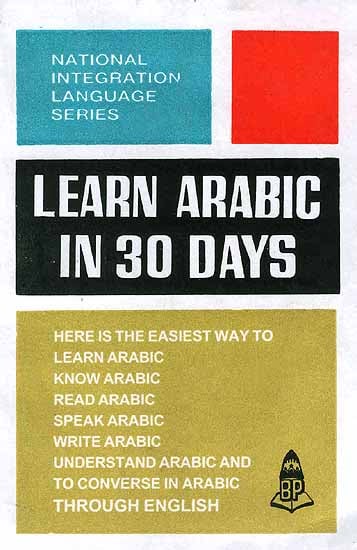

New poems by the latter two poets, often coming after major public events, have been greeted in the Arab world as events in themselves.Masadir Al-Adab Al-Arabi : PDF ONLINE TO DOWNLOAD THE FREE BOOK PLEASE CLICK. Finally, there were calls for the new poetry to have different ideas about itself, sometimes pointing in the direction of semantic investigation, as in the poetry of the Syrian poet Ali Ahmad Sa’ad, who has taken the pen name ‘Adonis’ and has been influenced by European, and especially French, ideas, sometimes being more explicitly political and capable of rousing large audiences, as in early works by the Palestinian Mahmoud Darwish or the Syrian Nizar Qabbani. Poetry was now often seen as a natural part of a ‘committed’ literature calling for social change.


From Iraqi poet Badr Shakir al-Sayyab’s poem ‘Song of the Rain’, translated by Mursi Saad El-Din11. 30Or two balconies before the moon’s departure.When your eyes smile the vines bring forth leaves,And the lights dance like the moon on the river,Trembling under the oars, softly in the dusk,As if stars are glittering in the depths …And then sink in a cloud of transparent sorrowLike the sea open-handed, cloaked by night,With winter warmth and autumn’s trembling Like birth and death, darkness and light.Like a child’s ecstacy when he fears the moon,As if the arches of clouds drink in the mistAnd the stillness of sparrows in the trees tickled by10. There are also Mahmoud Darwish and the Palestinian poets, whose work is discussed in Chapter 4.
However, the fact that modern Palestinian literature is in the main not politically propagandistic can be surprising to those who do not know it well. That much at least, lifted from the introduction to this book, is well known and relatively uncontroversial. Occupation and Diaspora: the Literature of Modern PalestineModern Palestine has given rise to a literature that is in some respects unique in the Arab world, and Palestinian writers and intellectuals have enjoyed an influence in Arab letters out of all proportion to the country’s size, matching the role that Palestine and the Israeli-Palestinian conflict have played in Arab affairs since the end of the Second World War. Egyptian readers, for example, brought up on the works of Egyptian poets in both the classical and colloquial languages, such as Salah Abd al-Sabur, Ahmad Abd al-Mu’ti Hegazi and Amal Dunqul writing in the former, and Salah Jahine, Fu’ad Haddad, Ahmad Fu’ad Nigm and Abd al-Rahman al-Abnoudi in the latter, might be surprised to read one critic’s estimate 31 that despite its ‘long critical experience’ the country failed to ‘produce … a poet great enough to utilize all the knowledge gained’, unlike in the ‘poetic stronghold’ of Iraq.In poetry, as in politics, there has long been a rivalry for leadership in the Arab world.
An estimated three quarters of a million of them poured into camps in neighbouring countries such as Lebanon, or into those parts of the former mandate territory that were ceded either to Jordan or to Egypt, the West Bank and the Gaza Strip, respectively. There was, first of all, the part of it that became Israel, and most of the Palestinian refugees forced out by the violence that accompanied the declaration came from here. Should Palestinian writers write about Palestine at the expense of everything else, aiming to serve as ‘spokesmen’ for the people from whom they come? Or should they have the same kind of loyalties as any other kind of literary writer, first and foremost to their writing? Questions of this sort are explored in this chapter, which gives an overview of main themes in modern Palestinian literature, including Palestinian historical experience, the fact of dispossession and exile, and the possibility of return.The declaration of the state of Israel in May 1948 divided the British mandate territory of Palestine into three parts. They have also explored what it might mean to be identified as a ‘Palestinian writer,’ particularly when Palestinians have long been divided between those living ‘within’, whether in the Occupied Territories or in Israel proper, and those living ‘without’, in the Arab countries or further afield. They have emphasized the suffering that this crisis has brought to individuals from every walk of life, sometimes employing a black sense of humour to do so.
Kanafani’s literary work, collected in various volumes of short stories published in the 1960s and several novels, captures Palestinian life in exile in the decades after 1948, notably in the novellas Men in the Sun and All That’s Left to You. He was assassinated in Beirut in 1972. Like many others in similar circumstances Kanafani lived an unstable life, living and working by turns in Syria, Kuwait and Lebanon and finally becoming a spokesman for the Popular Front for the Liberation of Palestine, one of the political factions that emerged in the 1960s. 1One of the best-known of these is Ghassan Kanafani, a writer, journalist and political activist who was himself caught up in the 1948 exodus from Palestine. The experience of 1948 and its after-effects, whether in the bitterness of dispossession and exile or in the new problems that arose for the Arab citizens of the new state of Israel, henceforth became leading themes for generations of Palestinian writers.
In it, he describes the attempt of four Palestinians to cross the border from Iraq into neighbouring Kuwait in search of work.


 0 kommentar(er)
0 kommentar(er)
